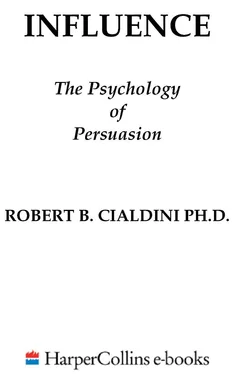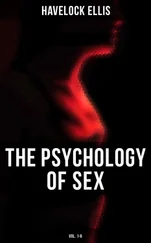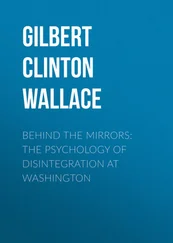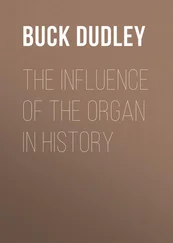The nude body of Lee Alexis Wilson, 23, was found Friday in dense shrubbery alongside the wall of the Art Institute by a 12-year-old boy playing in the bushes.
Police theorized she may have been sitting or standing by a fountain in the Art Institute's south plaza when she was attacked. The assailant apparently then dragged her into the bushes. She apparently was sexually assaulted, police said.
Police said thousands of persons must have passed the site and one man told them he heard a scream about 2 P.M. but did not investigate because no one else seemed to be paying attention.
9. The New York "seizure" and "smoke" emergency studies are reported by Darley and Latane (1968) and Latane and Darley (1968), respectively. The Toronto experiment was performed by Ross (1971). The Florida studies were published by Clark and Word in 1972 and 1974.
10. See a study by Latane and Rodin (1969) showing that groups of strangers help less in an emergency than groups of acquaintances.
11. The wallet study was conducted by Hornstein et al. (1968), the antismoking study by Murray et al. (1984), and the dental anxiety study by Melamed et al. (1978).
12. The sources of these statistics are articles by Phillips in 1979 and 1980.
13. The newspaper story data are reported by Phillips (1974), while the TV story data come from Bollen and Phillips (1982), Gould and Schaffer (1986), Phillips and Carstensen (1986), and Schmidtke and Hafner (1988).
14. These new data appear in Phillips (1983).
15. The quote is from The International Cyclopedia of Music and Musicians , 1964, which Sabin edited.
16. From Hornaday (1887).
CHAPTER 5 (PAGES 167-207)
1. The Canadian election study was reported by Efran and Patterson
(1976). Data of this sort give credence to the claim of some Richard Nixon backers that the failure that contributed most to the loss of the 1960 TV debates with John F. Kennedy—and thereby to the election—was the poor performance of Nixon's makeup man.
2. See Mack and Rainey (1990).
3. This finding—that attractive defendants, even when they are found guilty, are less likely to be sentenced to prison—helps explain one of the more fascinating experiments in criminology I have heard of (Kur-tzburg et al., 1968). Some New York City jail inmates with facial disfigurements were given plastic surgery while incarcerated; others with similar disfigurements were not. Furthermore, some of each of these two groups of criminals were given services (for example, counseling and training) designed to rehabilitate them to society. One year after their release, a check of the records revealed that (except for heroin addicts) those given the cosmetic surgery were significantly less likely to have returned to jail. The most interesting feature of this finding was that it was equally true for those criminals who had not received the traditional rehabilitative services as for those who had. Apparently, some criminologists then argued, when it comes to ugly inmates, prisons would be better off to abandon the costly rehabilitation treatments they typically provide and offer plastic surgery instead; the surgery seems to be at least as effective and decidedly less expensive.
The importance of the newer, Pennsylvania data (Stewart, 1980) is its suggestion that the argument for surgery as a means of rehabilitation may be faulty. Making an ugly criminal more attractive may not reduce the chances that he will commit another crime; it may only reduce his chances of being sent to jail for it.
4. The negligence-award study was done by Kulka and Kessler (1978), the helping study by Benson et al. (1976), and the persuasion study by Chaiken (1979).
5. An excellent review of this research is provided by Eagly et al. (1991).
6. The dime-request experiment was conducted by Emswiller et al. (1971), while the petition-signing experiment was done by Suedfeld et al. (1971).
7. The insurance sales data were reported by Evans (1963). The "mirroring and matching" evidence comes from work by LaFrance (1985), Locke and Horowitz (1990), and Woodside and Davenport (1974). Additional work suggests yet another reason for caution when dealing with similar requesters: We typically underestimate the degree to which similarity affects our liking for another (Gonzales et al., 1983).
8. See Drachman et al. (1978) for a complete description of the findings.
9. Bornstein (1989) summarizes much of this evidence.
10. The mirror study was performed by Mita et al. (1977).
11. For general evidence regarding the positive effect of familiarity on attraction, see Zajonc (1968). For more specific evidence of this effect on our response to politicians, the research of Joseph Grush is enlightening and sobering (Grush et al., 1978; Grush, 1980), in documenting a strong connection between amount of media exposure and a candidate's chances of winning an election.
12. See Bornstein, Leone, and Galley (1987).
13. For an especially thorough examination of this issue, see Stephan
(1978).
14. The evidence of the tendency of ethnic groups to stay with their own in school comes from Gerard and Miller (1975). The evidence for the dislike of things repeatedly presented under unpleasant conditions comes from such studies as Burgess and Sales (1971), Zajonc et al. (1974), and Swap (1977).
15. From Aronson (1975).
16. A fascinating description of the entire boys'-camp project, called the "Robbers' Cave Experiment," can be found in Sherif et al. (1961).
17. The Carlos example comes once again from Aronson's initial report in his 1975 article. However, additional reports by Aronson and by others have shown similarly encouraging results. A representative list would include Johnson and Johnson (1983), DeVries and Slavin (1978), Cook (1990), and Aronson, Bridgeman, and Geffner (1978a, b).
18. For a careful examination of the possible pitfalls of cooperative learning approaches, see Rosenfield and Stephan (1981).
19. In truth, little in the way of combat takes place when the salesman enters the manager's office under such circumstances. Often, because the salesman knows exactly the price below which he cannot go, he and the boss don't even speak. In one car dealership I infiltrated while researching this book, it was common for a salesman to have a soft drink or cigarette in silence while the boss continued working at his desk. After a seemly time, the salesman would loosen his tie and return to his customers, looking weary but carrying the deal he had just "hammered out" for them—the same deal he had in mind before entering the boss's office.
20. For experimental evidence of the validity of Shakespeare's observation, see Manis et al. (1974).
21. A review of research supporting this statement is provided by Lott and Lott (1965).
22. See the study by Miller et al. (1966) for evidence.
23. The study was done by Smith and Engel (1968).
24. The rights to such associations don't come cheaply. Corporate sponsors spend millions to secure Olympic sponsorships, and they spend many millions more to advertise their connections to the event. Yet it may all be worth the expense. An Advertising Age survey found that one third of all consumers said they would be more likely to purchase a product if it were linked to the Olympics.
25. The Georgia study was done by Rosen and Tesser (1970).
26. From Asimov (1975).
27. Both the sweatshirt and the pronoun experiments are reported fully in Cialdini et al. (1976).
CHAPTER 6 (PAGES 208-236)
1. The quote is from Milgram's 1963 article in the Journal of Abnormal and Social Psychology.
2. All of these variations on the basic experiment, as well as several others, are presented in Milgram's highly readable book Obedience to Authority, 1974. A review of much of the subsequent research on obedience can be found in Blass (1991).
Читать дальше












